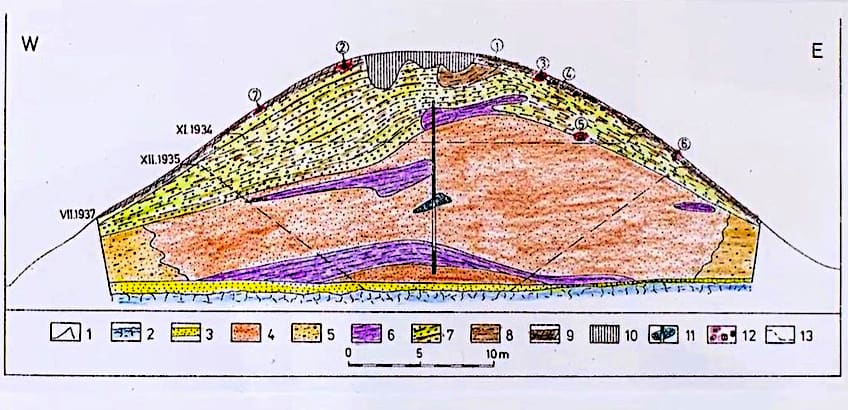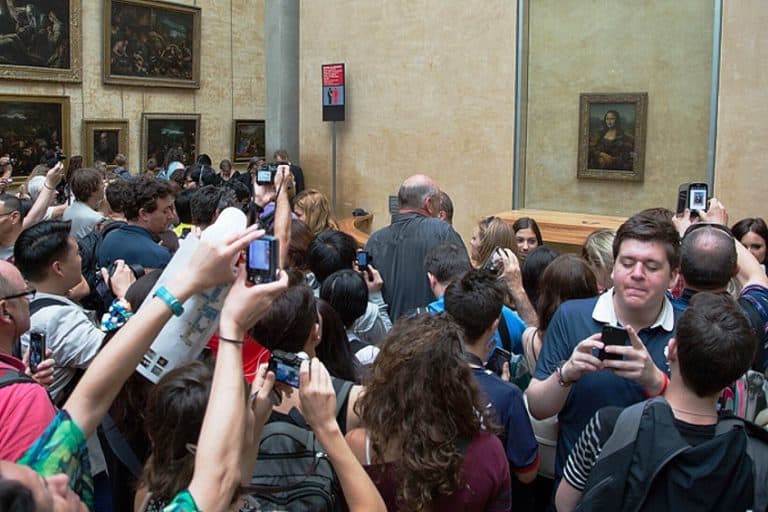What Are Artifacts? – The Historical and Cultural Value of Objects
What are artifacts? Tools, clothing, and art objects are a few of the types of artifacts created by humans. Historical artifacts, such as ancient world artifacts, are able to give modern humans insight into a past where there was often no written language. Let us find out more about archaeological artifacts by finding the answers to related questions on the subject, for example, what are cultural artifacts, and which item is an example of an artifact?
What Are Artifacts?
Scholars who want to understand an ancient culture can benefit greatly from archaeological artifacts. Archaeologists unearth ancient societies’ structures and utilize the historical artifacts discovered there to study and analyze the past.
Because many ancient societies did not actively document their histories, ancient world artifacts are often the only indications of how the people lived from day to day.
In archaeology, the generic word is “artifact,” although in museums, the comparable broad term is usually “object,” and in art history, it might be artwork or a more specialized term like “carving. In various settings, the same thing may be labeled all or one of these, and more precise terminology will be used when discussing individual items or sets of related ones.

There are many types of artifacts, and they are commonly mistaken for ecofacts (such as discovered animal parts) and features (elements in the landscape that appear to be manmade, usually structural); all three can be discovered together at archaeological sites.
A wide range of studies is carried out in order to better understand historical artifacts and subsequently offer information about them to the scientific and public worlds. However, the process of examining ancient world artifacts through archaeology can be hampered by artifact theft and collection, which raises certain ethical concerns.
Which Item Is an Example of an Artifact?
Artifacts can originate from any archaeological environment, such as being buried along with a corpse, places where they were used as votive offerings, residential settings, or hoards, such as those found in wells, and even ancient rubbish dumps. Pottery containers, stone tools, metal objects such as weaponry, and personal ornamentation such as jewelry, buttons, and clothes are examples of types of artifacts.
Organic remains such as animal bones found within or near human settlements are another example. Archaeologists classify such natural materials as ecofacts rather than artifacts, such as fire-split pebbles from a fireplace or plant material utilized for nourishment.

Artifacts Are the Results of Behavioral and Transformative Processes
A behavioral process entails collecting raw resources, producing them for a specified purpose, and ultimately discarding them. Transformational processes start at the end of behavioral processes; this is when nature or people transform the artifact after it has been buried. Both of these processes are important in determining the context of an artifact.
An artifact’s context may be divided into two categories: main setting and secondary setting. A matrix is a physical environment in which an artifact resides, while a provenience is a specific position inside a matrix.
When an artifact is discovered in its original setting, the matrix and provenience have not been altered by transformative processes.
Transformational Processes
When speaking about the secondary setting, transformational processes change the matrix and provenience. Stratigraphic features are non-portable human activity remnants such as hearths, roadways, deposits, ditches, and other similar relics. Ecofacts, also known as biofacts, are archaeologically significant artifacts created by other creatures, such as pollen or animal bones.
Manuports are natural items that have been relocated but not modified by people. Seashells brought inland or spherical pebbles relocated away from the water flow that created them are two examples of manuports..
These lines are frequently blurred; a bone extracted from an animal’s body is a biofact, yet a bone fashioned into a useful utensil is an artifact.

Early Stone Items
Likewise, there may be controversy about early stone items that are either primitive crafts or occur naturally and happen to just look very similar to early human or Homo sapiens objects.
It can be difficult to discern between genuine man-made lithic artifacts and geofacts, which are naturally produced lithics that mimic man-made tools.
Artifacts can be authenticated by looking at the general features of man-made tools as well as the local features of the location. At sites, artifacts, features, and ecofacts can all be found together. Sites may feature various combinations of the three; many may contain all three, whereas others could only contain one or two.

Sites Can Have Distinct Borders
These include walls and moats, although this is not always the case. Sites can be differentiated by categories such as geography and previous roles. The presence of artifacts at these locations can provide researchers with essential archaeological knowledge. One example would be using the position and depth of buried artifacts to create a chronological order of prior events at the site.
As Carol Kramer said “pots are not people”, modern archaeologists take care to separate material culture from ethnicity, which is frequently more nuanced.
Discovery of Historical Artifacts
An artifact is any item that was purposefully constructed and sculpted by humans. Some relics are discovered by chance, such as by a farmer cultivating his field or a worker laying a foundation.
Archeological excavations and artifact recovery, on the other hand, usually follow well-established protocols meant to capture as much information about a location and its artifact collection as possible.
When excavating artifacts from a site, archeologists attempt to determine and record the context in which the piece was discovered.

To establish context, the artifact’s precise vertical and horizontal placements, its relationship to the strata in which it was discovered and any cultural influences that led to its location must all be documented.
Each excavation phase is documented with precise maps and images of the site. Some archeologists collect data on discovered artifacts on specially formulated data sheets, which are then input into a computer. Before being delivered to a laboratory for study, recovered artifacts are packed in bags (and occasionally allocated field numbers).

The propensity of artifacts to deteriorate when dried too quickly makes retrieval of artifacts in damp or flooded locations more challenging. Some retrieved materials may require particular care even in dry caverns if they are to be maintained. It is critical that an archeologist conservator be onsite to aid in the recovery of artifacts in these circumstances. Plaster, resin, or latex rubber can be used to preserve delicate items.

Finally, the artifacts are bundled for transport to an off-site laboratory. Any off-site processing should be completed as soon as possible so that the documenting of any items discovered at the site may begin. Typically, each professional participating in an excavation is responsible for preparing a report on his or her discoveries at the site.
These papers will be compiled and published as a report in a scientific journal or book. Archaeologists are frequently in charge of creating a report on how the location should be managed, explored further, or preserved.

Analysis of Archaeological Artifacts
The type of artifact being analyzed influences artifact analysis. Lithic analysis is the study of stone artifacts, which are frequently in the form of tools. Stone artifacts are common in prehistoric periods and hence play an important role in addressing archaeological concerns about the past.
On the exterior, lithic artifacts can assist archaeologists in studying how technology has evolved through time by displaying a diversity of tools and production processes from various eras of time.

However, this form of study can provide answers to more profound concerns, such as how civilizations were constructed and structured with respect to institutionalization and the distribution of wealth. Neutron activation, petrographic analysis, x-ray fluorescence, individual flake analysis, and mass analysis are among the lab methods that contribute to the lithic analysis process. Ceramic analysis, which is focused on the archaeological examination of pottery, is another sort of artifact analysis.
This sort of examination can assist archaeologists in learning about the basic materials used and how they were employed in the production of pottery. The laboratory techniques that enable this are mostly based on spectroscopy.

Atomic absorption and x-ray fluorescence are some of the spectroscopic techniques employed. The ceramic study provides more than simply data on raw materials and pottery manufacture; it also provides insight into historical cultures’ technology, economics, and social structure.
There is also faunal analysis to analyze artifacts in the form of animal remains. Faunal remains, like lithic artifacts, are very common in the area of archaeology. Because animals are traded in diverse marketplaces through time and over great distances, faunal research gives insight into commerce. Faunal remains from prior sophisticated cultures can also give information on social position, ethnic differences, and food.

Artifact dating and presenting a chronological timeline are critical components of artifact analysis. The many sorts of analyses mentioned above can all help with artifact dating. Historical dating, relative dating, and typology are the three basic methods of dating. When objects are put in a certain sequence in relation to one another, relative dating occurs, whereas historical dating happens for eras of documented evidence; relative dating was the sole method of dating the prehistoric periods of time.
Typology is the practice of classifying objects based on their substance and shape. This technique is founded on the concept that certain object styles correspond to specific time periods and that these styles vary slowly through time.
Ethics
The gathering and plundering of artifacts have generated heated controversy in the archaeological community. In archaeological terminology, looting occurs when objects are taken from sites and privately acquired or sold before they can be examined and evaluated through legitimate scientific archaeology. The argument is around the contrast in ethics between archaeologists and collectors.
When it comes to artifacts, archaeologists are concerned with excavations, history, and laboratory work, whereas collectors are driven by a variety of personal interests. This prompts people to consider the archaeological issue, “Who possesses the past?”

There are also ethical concerns regarding the display of objects in museums that were stolen from other nations under dubious conditions, such as the British Museum’s display of the Parthenon Marbles. The exhibition of historical artifacts belonging to non-European native peoples by European museums, notably those captured during the European invasion of Africa, has also aroused ethical concerns.
Pan-African activists have undertaken active steps against European museums in order to reclaim artifacts they think are African.
So, what are artifacts? Artifacts are frequently the most fascinating aspect of archaeological inquiry. Ancient world artifacts, whether valuable or ordinary, are essential for reading the archaeological record and learning about how humankind lived in the ancient days. However, the majority of archaeological information is acquired from an artifact’s environment, or where an artifact is discovered and alongside what other items it is retrieved. Archaeologists use artifacts and their environment to describe and compare elements of historical societies, as well as to create a timeline of those cultures. There are also constraints on the amount of scientific knowledge that artifacts can supply on their own.
Frequently Asked Questions
Which Item Is an Example of an Artifact?
Any object that was created by a human hand is regarded as an artifact. Ancient artifacts can include clothing worn by our ancestors, the tools they used, or even the art they made. A famous artifact is the Venus of Willendorf (1908), which is an ancient artifact portraying a female human figure. Many Hollywood movies revolve around discovering or retrieving artifacts, such as the search for the biblical artifact known as the Ark of the Covenant in the Indiana Jones movie from the 1980s.
What Are Cultural Artifacts?
Cultural artifacts are historical artifacts that relate to art or history. This could be an ancient artifact such as a carved statue, or a historical document. Another type of artifact is a media artifact. This includes digital files, photographs, and films. Other types of artifacts are data artifacts such as source code created by a programmer or designs, plans, and strategies. However, in the context of cultural artifacts, usually refers to archaeological artifacts that have been unearthed at ancient sites. Historical artifacts are essential in helping modern-day humans gain some insight into the ways in which ancient humans lived.
Isabella studied at the University of Cape Town in South Africa and graduated with a Bachelor of Arts majoring in English Literature & Language and Psychology. Throughout her undergraduate years, she took Art History as an additional subject and absolutely loved it. Building on from her art history knowledge that began in high school, art has always been a particular area of fascination for her. From learning about artworks previously unknown to her, or sharpening her existing understanding of specific works, the ability to continue learning within this interesting sphere excites her greatly.
Her focal points of interest in art history encompass profiling specific artists and art movements, as it is these areas where she is able to really dig deep into the rich narrative of the art world. Additionally, she particularly enjoys exploring the different artistic styles of the 20th century, as well as the important impact that female artists have had on the development of art history.
Learn more about Isabella Meyer and the Art in Context Team.
Cite this Article
Isabella, Meyer, “What Are Artifacts? – The Historical and Cultural Value of Objects.” Art in Context. February 22, 2023. URL: https://artincontext.org/what-are-artifacts/
Meyer, I. (2023, 22 February). What Are Artifacts? – The Historical and Cultural Value of Objects. Art in Context. https://artincontext.org/what-are-artifacts/
Meyer, Isabella. “What Are Artifacts? – The Historical and Cultural Value of Objects.” Art in Context, February 22, 2023. https://artincontext.org/what-are-artifacts/.











